Wheelchair Accessible NYC: The Ultimate Guide

Table of Contents
- About Accessible NYC and Why Travel There
- When Should You Travel to NYC?
- Season Recommendations
- Where to stay in NYC
- Accessible Transportation in NYC
- Top 10 Things to do and Their Accessibility
- Accessible Restaurants Recommended by Our Community
- Accessible NYC Tips From Our Community
- Wheelchair Repair Shops
Although we live in a more accessibility-conscious world, it can still be remarkably hard to find accessibility information when planning a trip or getaway. Not only is it hard to find this kind of information, but in some cases (and destinations), it's non-existent. People with disabilities still travel to top destinations, but their trips are often cut short, made more difficult, and generally not as exciting as they could be.
To have a fun, meaningful holiday, travelers with accessibility needs should have access to accessibility information for their chosen destination. Ideally, information on accessibility should be readily provided not just for the accessible attractions available but also for hotels, restaurants, transport options, parking spaces and so on. Here at Wheel the World, we see the irony in the inaccessibility of accessible travel information, and we're looking to change this. That's why we've collected all the necessary accessible travel information for anyone visiting New York City, making this travel guide your go-to resource on the topic.
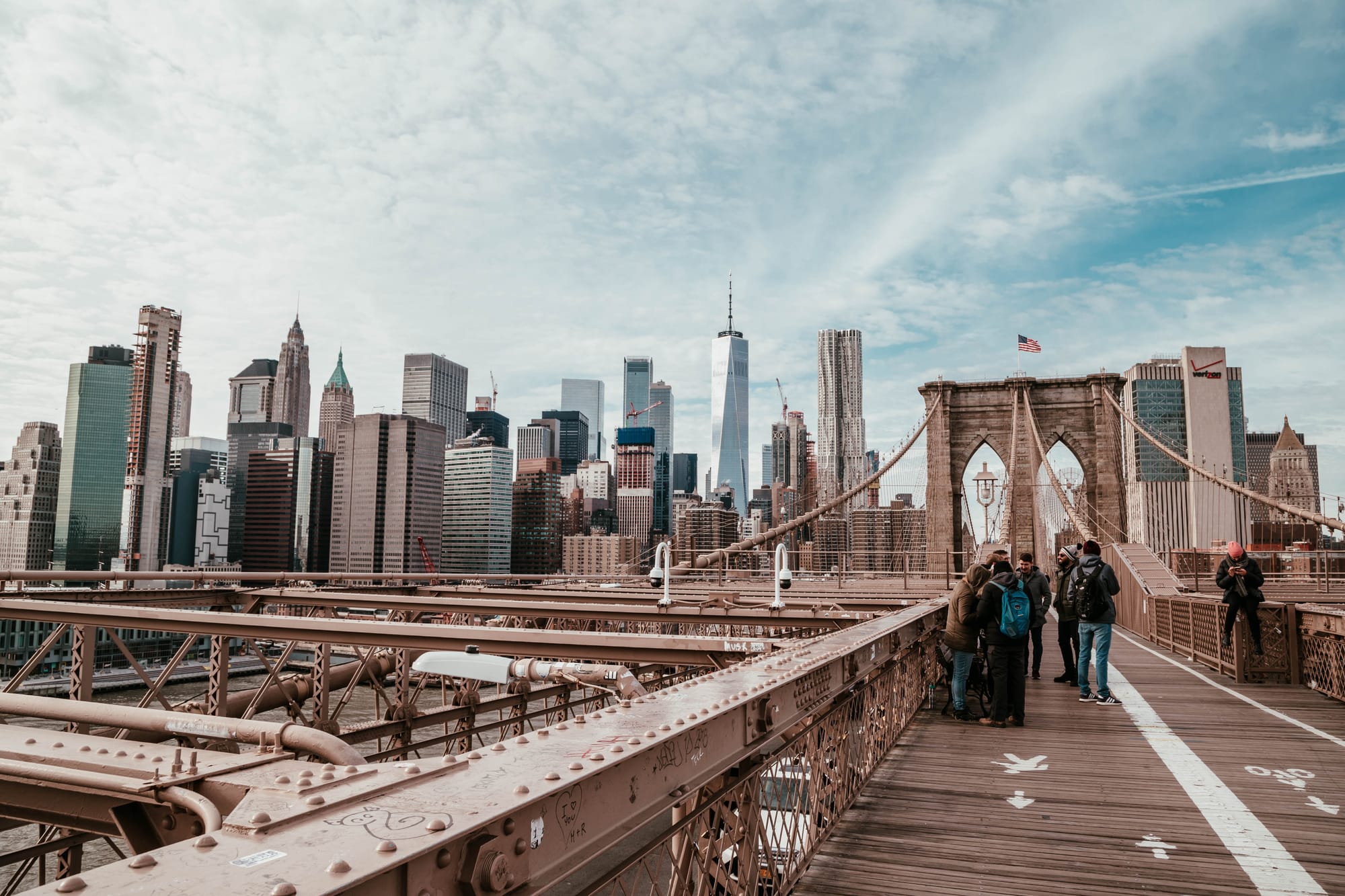
About Accessible NYC and Why Travel There
If you've got a disability, then we've got some good news for you — New York is one of the most accessible cities in the world. In recent years, the city has made particular efforts to change things for the better. Do consider the type of terrain, for example, some areas of Manhattan and the Bronx can be quite hilly.
Pavements also vary throughout the city, with different widths and conditions in different neighborhoods. But many areas have made tremendous efforts to comply with ADA standards, to help ensure that there are proper ramps and pathways. Also worth noting is that many public space shave differing flooring materials, from concrete and tile to marble. Many areas also have tactile warning surfaces.
So, in addition to this city being so accessible, why travel there? Well, NYC is packed with things to do and iconic attractions to visit and explore. Better still, there is a wide array of different attractions catering to a variety of interests. Top attractions include parks, water tours, views of the city, sports, theater and music events, and stunning cuisine and street food options.
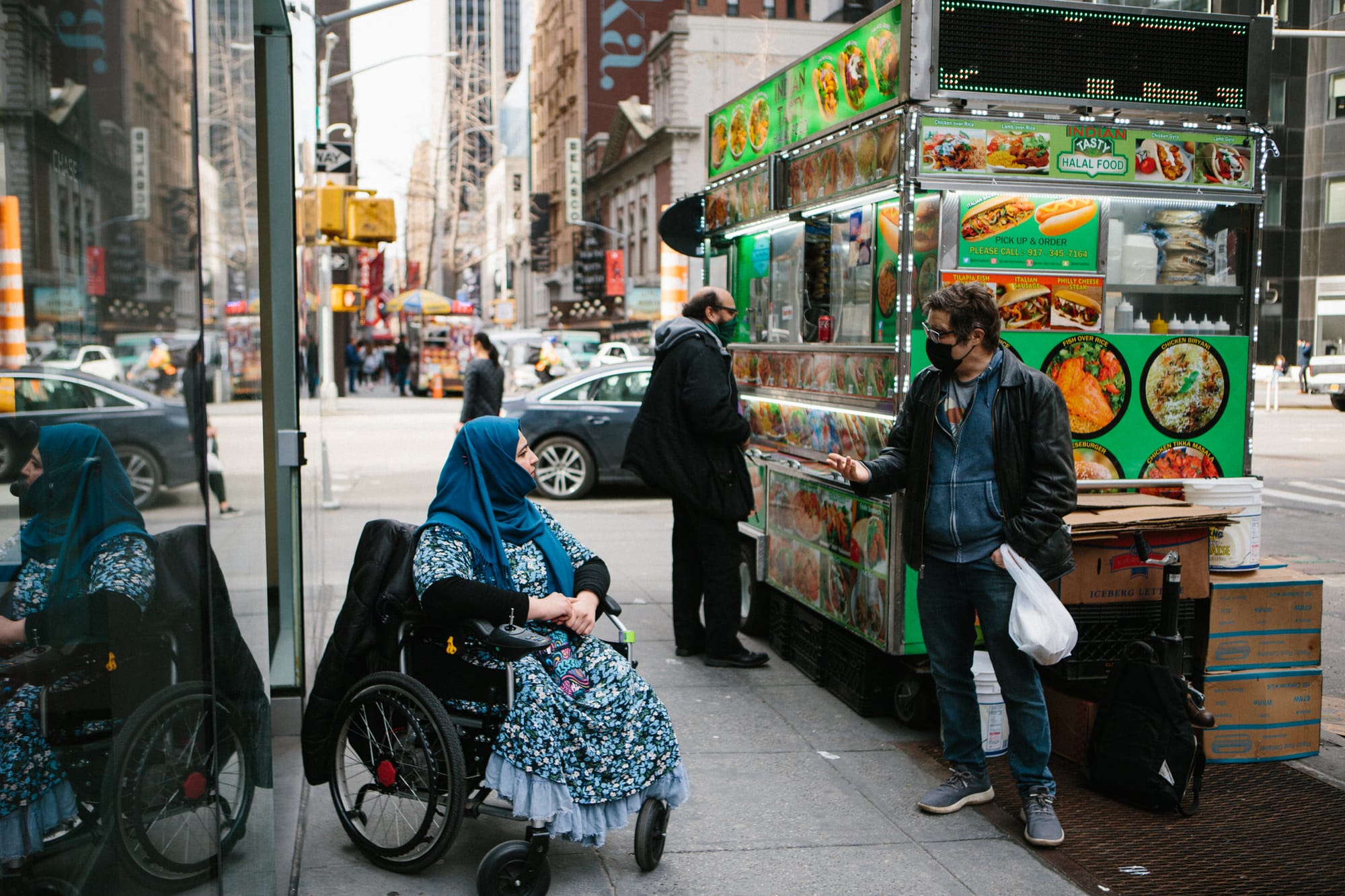
When Should You Travel to NYC?
New York looks good all year round, but some times are better to travel in than others. Considering this, let's take a look at all four seasons, so you know exactly what to expect when planning your trip.
Fall
Fall is widely considered the best time to travel to New York City. Generally considered a magical season, it's great for comfortable temperatures (50 to 77 degrees F) and making the most out of getting the full NY experience. With the weather not too hot or cold, going to the parks is great as you can see the colorful leaf change in full swing.
Spring
However, Spring, specifically May, is a similarly great time to visit. Just like the Fall, the temperatures are very pleasant (53 to 72 degrees F), and outdoor activities are a must. Spring rewards park excursions with bright blooms and green leaves rather than the red-gold of Fall. Both these seasons (April to May and September to October) are considered to be shoulder seasons, which means you're more likely to get discounts, shorter queues, and fewer people at attractions.
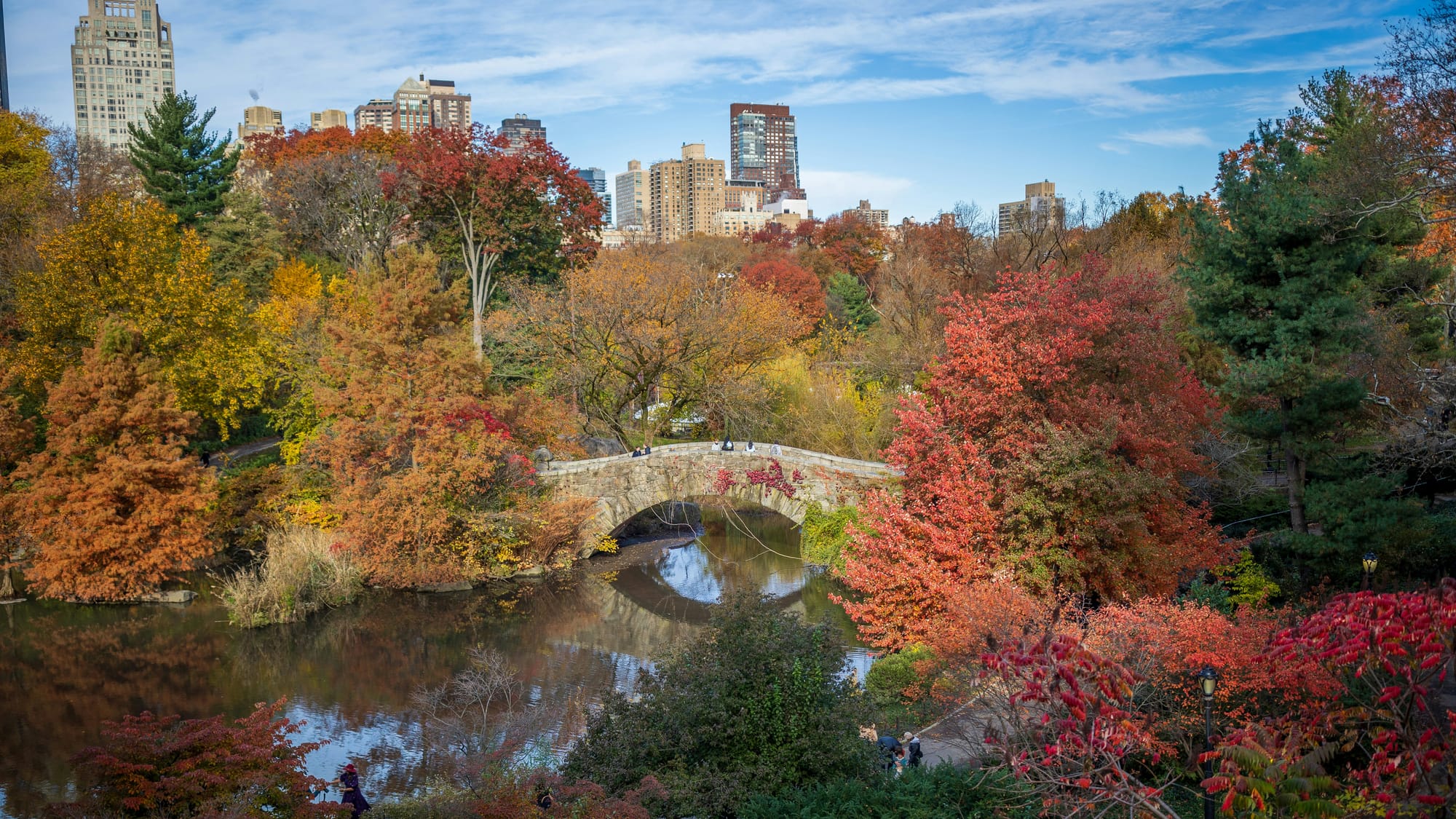
Summer
If you like the heat, then the summer months (June to August), aka high season, is the time for you. Bear in mind though, that temperatures can soar during this time (68 to 86 degrees F) with very high humidity, and you're going to find huge numbers of people at all attractions resulting in more queuing.
It's worth noting that November and December are also considered "high season", as many visitors arrive in time for some festive fun alongside cooler temperatures. During both these time periods, prices rocket, and booking in advance is essential.
Chillier times
Generally, January and February are the months to avoid coming to New York if you don't like the cold. Considered the low season, this is also the coldest time of the year (often as low as 27 degrees F) with an increasing number of snowstorms.
That being said, if you like colder weather, this is the ideal time to snap up some real bargains when it comes to accommodation and flights. But bear in mind that if the streets are not well cleared of the snow, that this can be a real obstacle in moving around.
Season Recommendations
If you can't decide when to visit, then here are some helpful hints as some times of the year are better for specific interests.
- February to March is the best time if you're on a budget. You'll avoid the crowds and there are always great deals for accommodation (and shopping) on the back of the New Year sales.
- June to August is recommended for families and groups. This is the busiest time of the year, and NYC has tons of outdoor activities available. For those travelers looking for a high-energy experience, checking out free concerts in the parks, or enjoying a sporting event, this time is a must.
- April to May (Spring) and September to October (Fall) are great times to visit if you're an art fan. New York is home to many art galleries, museums, and festivals. Both these shoulder seasons are ideal if you want to immerse yourself in art. Not only that, but coming in the Fall will let you experience the New York Film Festival while Spring has the Tribeca Film Festival.
- Additionally, September to October is also a great time to visit if you want to immerse yourself in NYC culture. This is the time when there are tons of top events taking place, ranging from NY Fashion Week to exciting holiday markets.
Where to stay in NYC
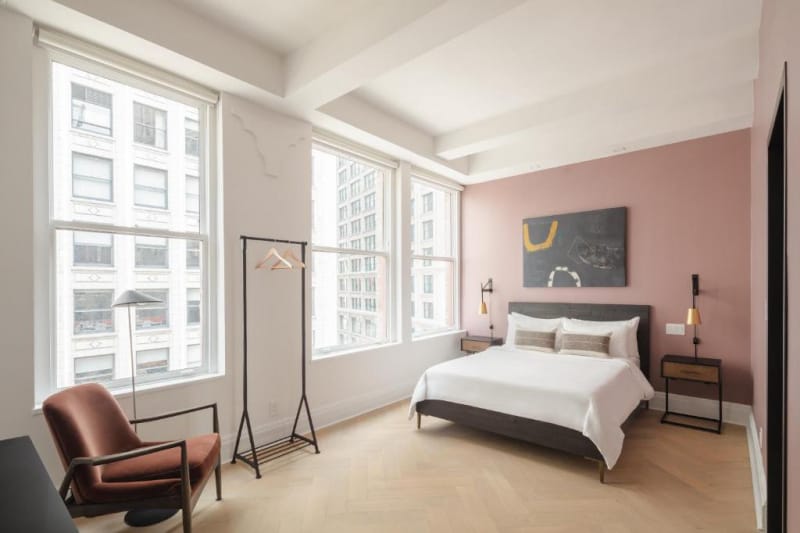
With NYC being so accessible, there are a huge number of accommodation options available to you if you decide to stay here. You can choose from most neighborhoods, as there is always something available with accessibility options in place. However, if you want to make your stay even easier, then some neighborhoods are better than others.
Staying in the center of Downtown New York means you're that much closer to all the main attractions. While there is a solid transport infrastructure, which is largely disability-friendly, it's always easier to be just a short wheelchair ride away from your destination. And this is exactly what staying in the Downtown area gives you. You're a short distance from the One World Trade Center, Oculus, Brooklyn Bridge, and more.
The Midtown West area also gives you good options when it comes to accessible hotels. Staying in this area means you're in close proximity to some of the best nightlife in the city. For instance, this area is close to Times Square, the Theater District, Central Park, Madison Square Garden, the Rockefeller Center, and Bryant Park — some good options for for this area is the Ink48 hotel and Sonder I Flatiron hotel, both of which feature roll-in showers, a shower seat, and shower grab bars.
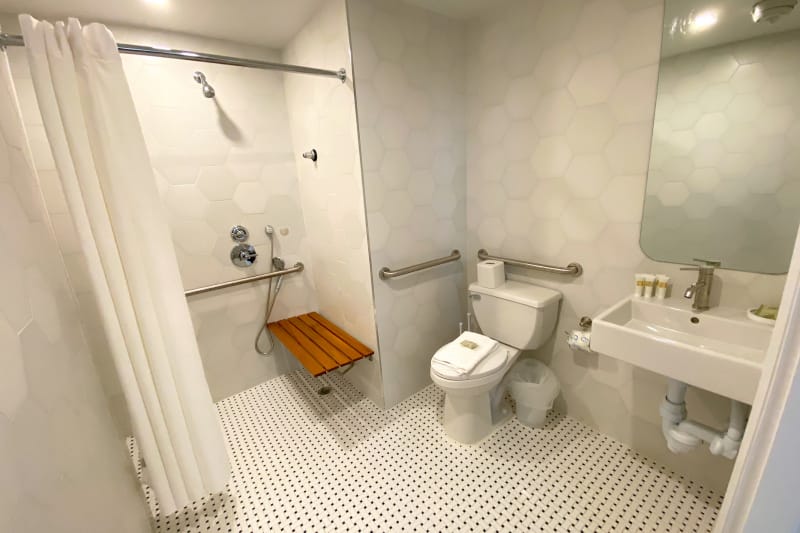
If you like the Upper West Side, consider the Arthouse Hotel New York, a great location to visit the American Museum of Natural History or the Lincoln Center. Or you could try the WestHouse Hotel New York in Midtown Manhattan, one of the best wheelchair accessible hotels in New York.
Accessible Transportation in NYC
Being able to get around NY is essential, and, luckily, this city really caters to those with accessibility needs. There are plenty of ways to get around, but knowing what these are before you head to New York will give you a much better, more relaxed start to your vacation.
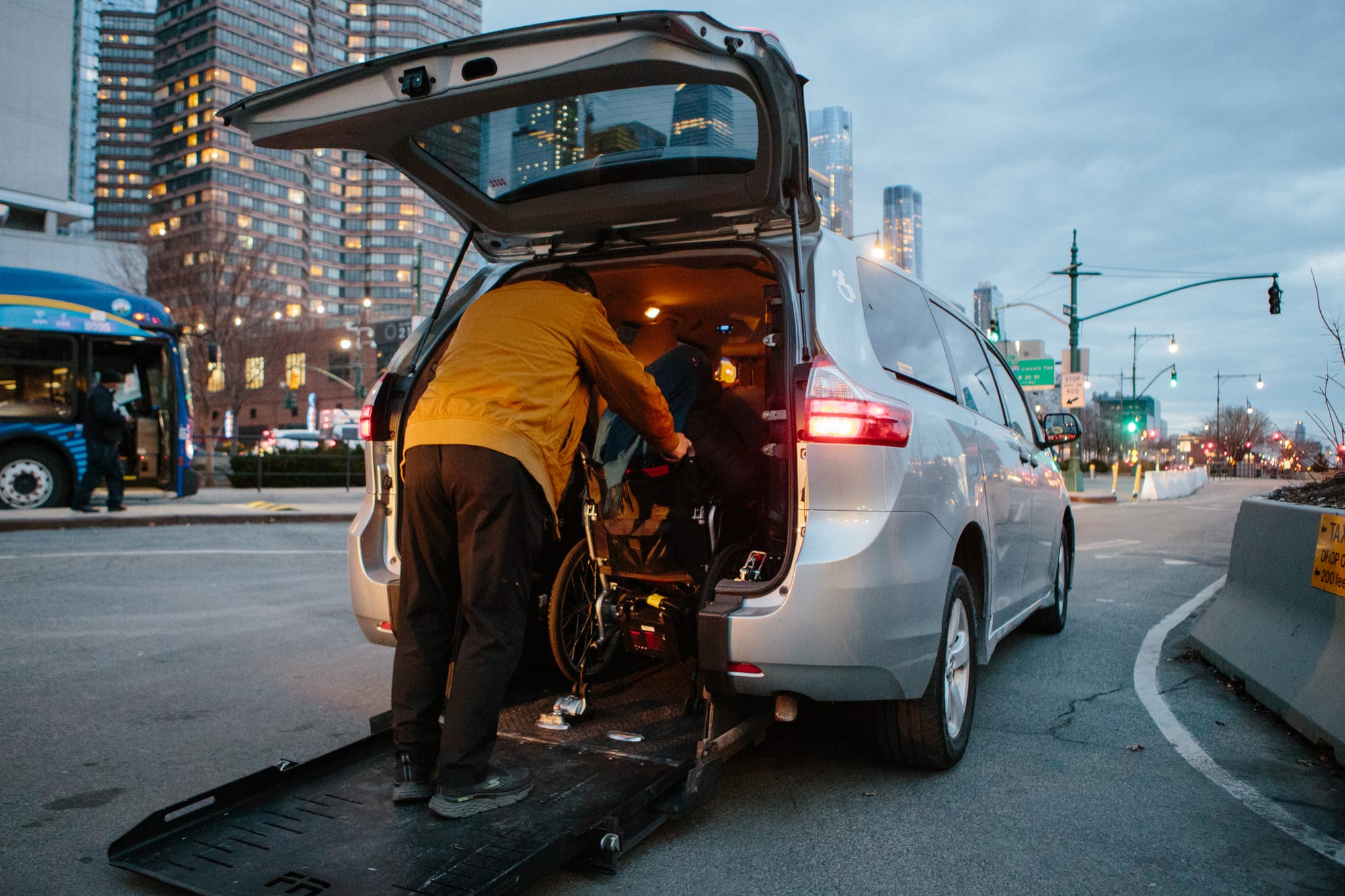
Moving to/from the Airport
If you're arriving at one of the city's main airports, then there are several ways to get from either JFK or Newark into the city itself. A solid option is to go through a private car hire company like Drive Master to transfer you directly to your hotel. These offer wheelchair-accessible options but should be booked in advance as spaces are often limited.
Depending on which airport you're landing in, you have different public transit transfer options. You can get the PATH trains or NJ Transit buses from Newark into New York. Both have wheelchair-accessible stations and all NJ Transit buses are accessible. From JFK, the accessible Air Train connects you to the accessible LIRR (Long Island Rail Road) or the Subway, but do check that your destination station is accessible.
The most convenient method is to hire transport through Wheel the World – whether you need a quick accessible transfer to and from the airport, or you need to use a vehicle for multiple days, your needs are covered. View those options here.
Getting Around New York
Once in New York, you can get around some areas easily by wheelchair. But, if you're sightseeing farther afield, knowing all the transport options is a must. Luckily, New York has a myriad of different wheelchair-friendly options. Don't forget, you can also rent wheelchairs in New York too. This includes manual and electric, as well as other walking aids should you need them.
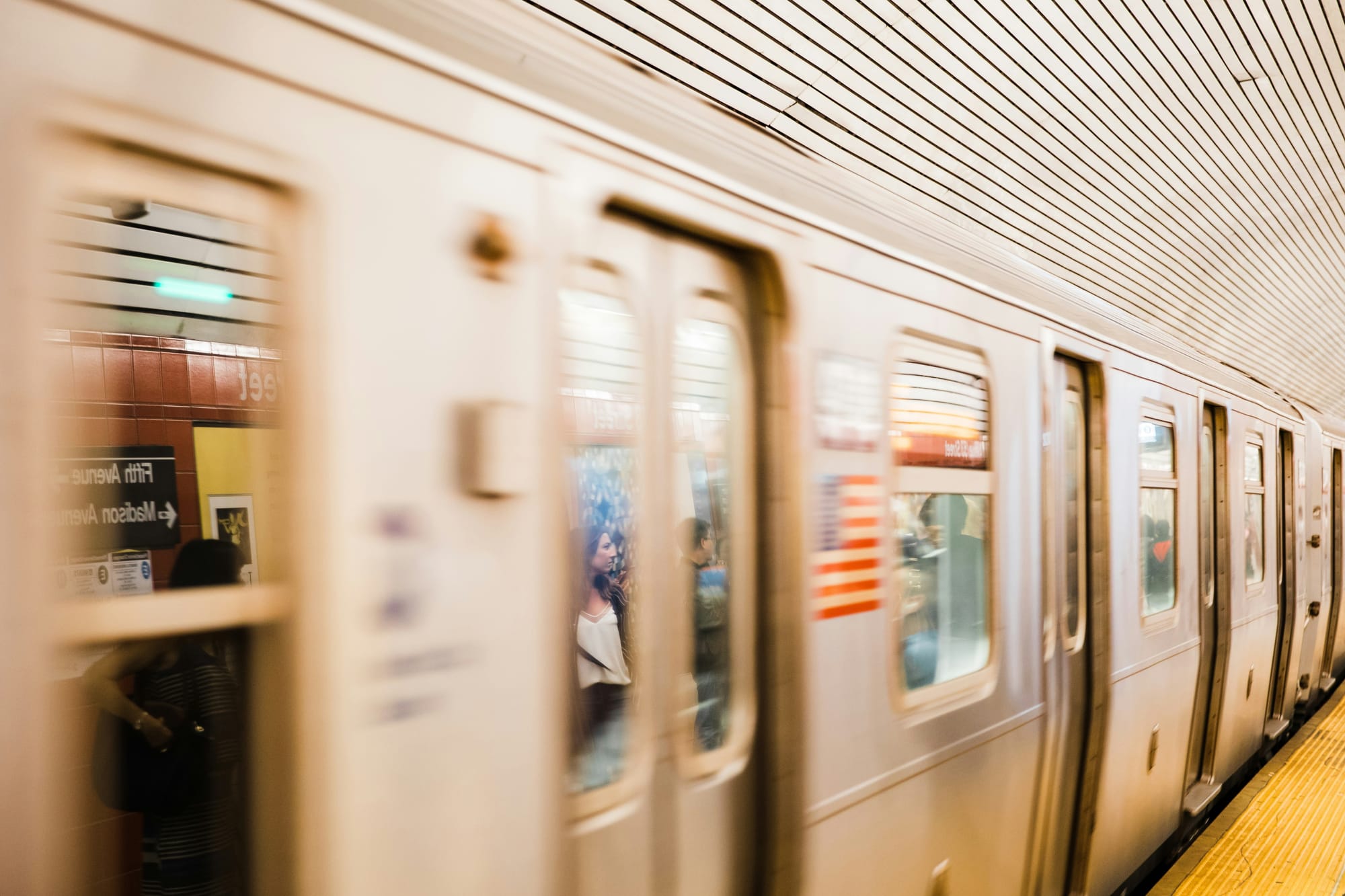
Subway
With over 100 accessible stations, using the Subway is a convenient, regular option. Accessible stations have wheelchair-accessible elevators, entry gates, and MetroCard machines. However, many smaller stations are still not accessible so bear that in mind. And, lifts sometimes breakdown, which is why we recommend taking the bus as a general rule.
Buses
All buses in NYC are accessible as they all have ramps, meaning you can access one whenever and wherever there is a stop. Drivers will usually help secure your wheelchair, check which stop you need to get off at, and provide additional aid if needed. However, compared to the subway, buses are quite slow. Traffic can be intense in New York, so don't take the bus if you're in a rush.
Hop on Hop off buses
Just like most major capital cities, New York is home to the Hop-on, Hop-off bus. This is also fully accessible and can accommodate wheelchairs and mobility scooters. You can even ask the driver for assistance if you need it. Although you can't get to the upper deck, the bottom deck still gives you excellent views of the city. This is also one of the best value-for-money options, saves you from wheeling, and gives you plenty of sites to see from a comfortable vantage point.
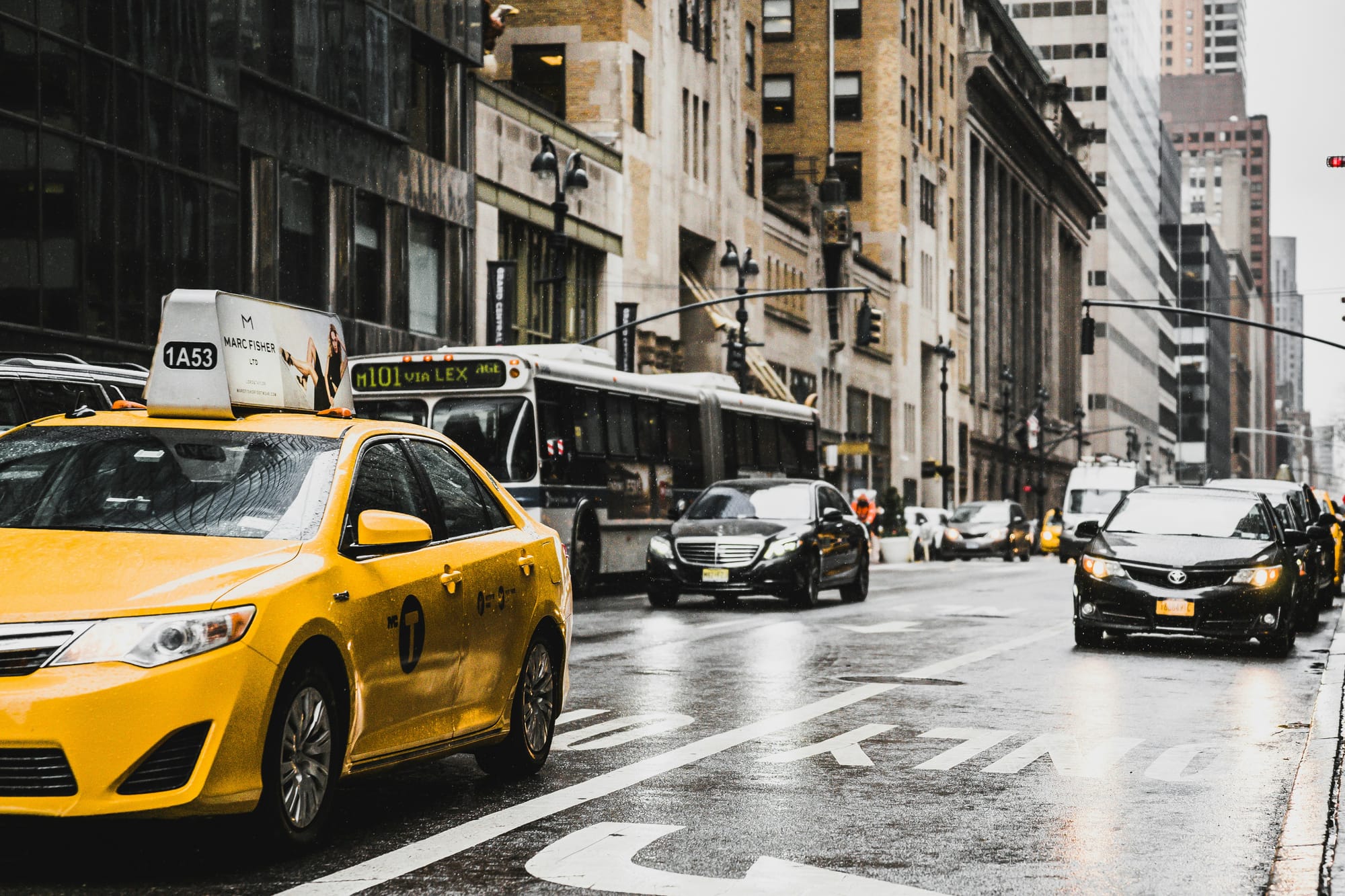
NY Taxis
Importantly, most taxis are not wheelchair accessible if you're flagging them down on the side of the road. However, you can book accessible cabs in advance through the Accessible Dispatch Program, the NYC Wheelchair Transportation app or the E-hail App. The specially trained drivers can also provide assistance.
One of the premier accessible cab companies in NYC is BeXpress. They provide curbside pickup and drop off services for wheelchair users, with both long and short-distance rides available. You can reserve rides in advance on their website, although some services can be booked on the same day. Their specially equipped vans make them a great option for getting around NYC.
Trains
As mentioned, PATH trains are one option. Most of their main stations are accessible including Hoboken, 33rd Street, and World Trade Center. The Metro-North Railroad gives you access to upstate New York from Manhattan. Not all stations are wheelchair accessible, however, stations such as Grand Central, New Haven, and Yankees are. Finally, you've got the LIRR, which connects Queens, Long Island, and Brooklyn with Manhattan. Generally, stations are wheelchair accessible, but it's worth checking the full map to be sure which ones are before you hop on.
Top 10 Things to do and Their Accessibility
Within New York, there are many wheelchair accessible vacation packages available. These include specific tours and multi-day vacation packages that offer unforgettable experiences like a NYC helicopter tour, dinner cruises, and Instagrammable wheelchair-accessible tours of Central Park, the Financial District, and Ground Zero. But you can do these alone, too. Let's take a look at all the things you can do and see in this vibrant city.

1. Rockefeller Center
A very well-known building in NYC with unbelievably good views. The top of this building has great views from the observation deck. With good accessibility, including easily accessible restrooms on the 66th floor (which is where you go to get the stunning views), this building is well worth a visit. Finally, service dogs are allowed, and staff are on hand should you need help with getting around.
2. Statue of Liberty and Ellis Island
Another very popular place to visit is the Statue of Liberty. And en-route, you can take a look at Ellis Island. Both landmarks are wheelchair accessible, as is the ferry you'll use to get out to the islands. Wheelchairs can be rented at both venues, but these can't be pre-booked and are offered on a first-come, first-served basis. Both locations offer accessible restrooms, and the Statue of Liberty also has elevators to the Wood Promenade.
3. Empire State Building
Another hugely iconic building, it would be remiss of us to leave this off the list of things to do. Opened in 1931, the Empire State Building still has a lot of its original design and Art Deco decor. The building hosts various exhibits covering its history and appearance in pop culture. The 80th floor is where you can enjoy city views, and this is reached by elevator only. As such, it's fully accessible, allowing you to experience the iconic 360-degree view of the NY skyline. Additionally, the viewpoint has accessible ramps, restrooms, and lowered binoculars for accessible viewing. Service dogs are permitted and there is an app you can download for accessible audio tours in a range of languages.
4. Museum of Modern Art (MOMA)
One of the larger art museums, the MOMA is known for its influential art galleries including works by Warhol and Van Gogh. There are six floors here, and all are accessible via ramps and elevators with a step-free entrance to the building itself. All restrooms are accessible too (though there is no designated accessible cubicle), and you can also borrow wheelchairs onsite should you need one. If you're organized, there are specially trained guides who can provide tours for those with visual impairments or American Sign Language users. There is also theater assistance including loops for hearing aids and closed captions for foreign films.

5. Brooklyn Bridge
This iconic attraction has self-guided tour access and allows you to see NYC from a different viewpoint. Built in 1964, it connects Brooklyn to Manhattan, and offers panoramic views and the chance to strike stunning poses under the twin arches. It has pedestrian lanes crossing the bridge, which are wheelchair accessible. There is a slight incline leading up to the bridge but most motorized vehicles should easily handle this. Earlier is better for this trip though, as it can get busy later in the day, and the pedestrian lanes are often filled with cyclists, too.
6. Sailing in Manhattan
For something a little different, there are accessible sailing options. These trips go from NY Harbor out into the main area around the Statue of Liberty, Governors Island, and Ellis Island. It's the best way to get skyline views of New Jersey and New York. The crews of these yachts are on hand to help if you need aid and the whole schooner is accessible for all. You can book your sailing trip here with WtW.
7. One World Trade Center Observatory
Located in the tallest building in New York, the One World Trade Center Observatory gives you an impressive view of the city. It's got 100 floors and a place to commemorate the victims of 9/11. Both the main building and the Observatory are wheelchair accessible with speedy elevators and accessible pick-up/drop-off spots out the front on West Street. Accessible restrooms with changing rooms are provided, and service animals are also welcome.

8. Brooklyn Botanic Gardens
Covering 21-hectares, the Brooklyn Botanic Gardens is home to more than 18,000 plant species. These include everything from Japanese gardens and lily ponds, to English country gardens and greenhouses. The Gardens are open all year round and can be explored at your leisure. Importantly, the area is wheelchair accessible, and you can even get a free wheelchair on arrival if they're not all in use. The paths are mostly flat, though some can be uneven or a little steep. Carers are admitted free, and service dogs are also permitted. In a US-first, these gardens also offer a visual impairment fragrance garden with raised beds for touching and smelling alongside Braille information signs.
9. Broadway Shows
There's nothing better than seeing an iconic theater production on Broadway. Shows happen most days of the week, so there's bound to be something you're interested in. Some sections of the theaters are wheelchair accessible, so when you're booking, make sure that you specify your accessibility requirements. Booking in advance is essential to get all you need. Most theaters, if given advance notice, can provide assistive listening, audio loops, closed captions, and/or audio descriptions.
10. Central Park
Heading to Central Park gives you a range of different options. For one, you can simply stroll the flat, smooth, wheelchair-accessible paths enjoying nature in the city center. Depending on the time of year, you may want to spend some time working out here. At Achilles International in Center Park, there are specific activities for both adults and children with disabilities. Adaptive cycling, running or walking sessions are also available depending on the day of the week.
There are also private guided tour options of Central Park with a local guide.
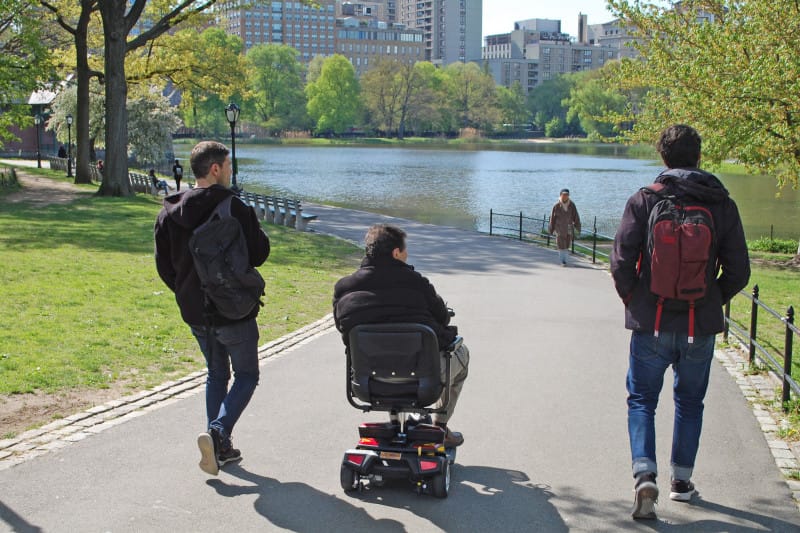
Accessible Restaurants Recommended by Our Community
Finding wheelchair-accessible restaurants can be hard, but thanks to our Wheel the World community of travelers, we've put together some options for you. Additionally, New York also has a Restaurant Access Program, which asks owners to identify if they're wheelchair-friendly. They should have a wheelchair decal in the window if they are, which makes it easy to spot when you're wheeling by. Check these wheelchair friendly options below, all of which have ADA compliant bathrooms.

- Gray's Papaya Hot Dogs: Quintessential experience on Broadway.
- Rizzo's Pizza: Classic NYC style pizza in Queens.
- Burger Joint's Secret: classic burger establishment on W56th street.
- Tikka Indian Grill: Delicious Indian cuisine. Check out their Brooklyn branch.
- Chelsea Market: fast food stalls galore in the Meatpacking district.
- Mercado Little Spain: Hidden gem featuring Spanish delights. You'll find them in Chelsea.
- The Halal Guys: various locations throughout the city. Check out their branch on E 14th St.
- Kat'z Deli Sandwiches: Experience the oldest deli in NYC on E Houston St.
- Blossom Restaurant: upscale vegan place at Central Park west.
Accessible NYC Tips From Our Community
Finding bathrooms
If you've got to go, you've got to go. Knowing where to go in NYC is essential as there are only around 1000 public restrooms in the entire city. Options differ throughout the boroughs, so it's worth checking out sites like Got2GoNYC to find out where the most recently added accessible restrooms are.
Some options include Chelsea Market, Bluestockings Cooperative, and Bryant Park in Manhattan. In Brooklyn, you're best bet is the Barnes and Noble shop in Park Slope. The ferry terminal for Staten Island and Burlington in The Bronx both offer accessible options.
Alternatively, keep your eyes peeled for churches, public libraries, transportation hubs, and book or department stores, as these will, more often than not, have accessible restrooms.
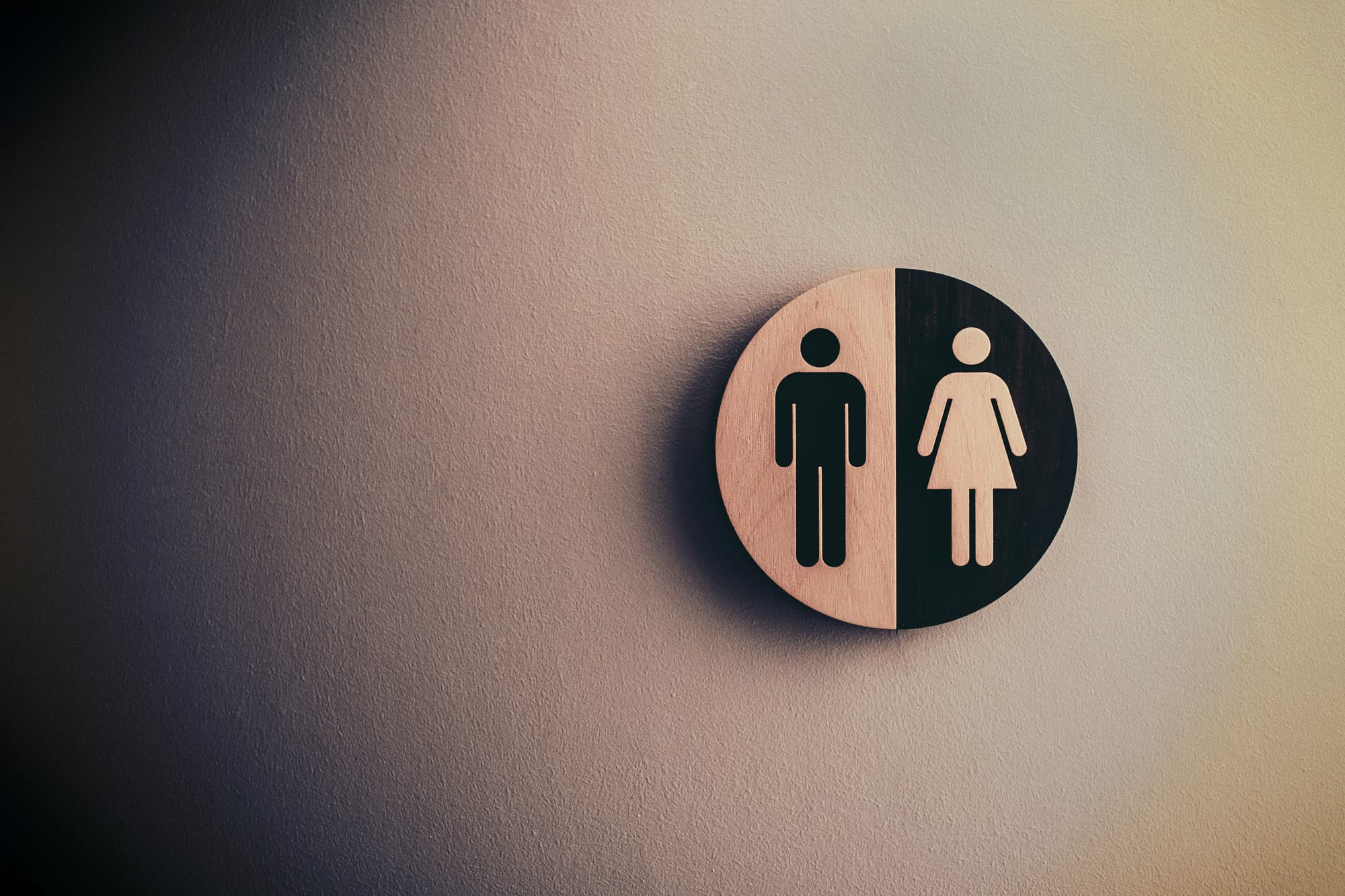
Packing list
For the most comfortable travel, preparation is key. Depending on your needs, we recommend taking:
- Wheelchair battery charger (if you use a power wheelchair)
- Shower footrest or chair
- Medications
- Service dog essentials
- Disability documents and ID
- Converter if you're not from the US*
*Remember, the USA uses Plugs A and B, which are flat parallel pins, and a 120V supply voltage.
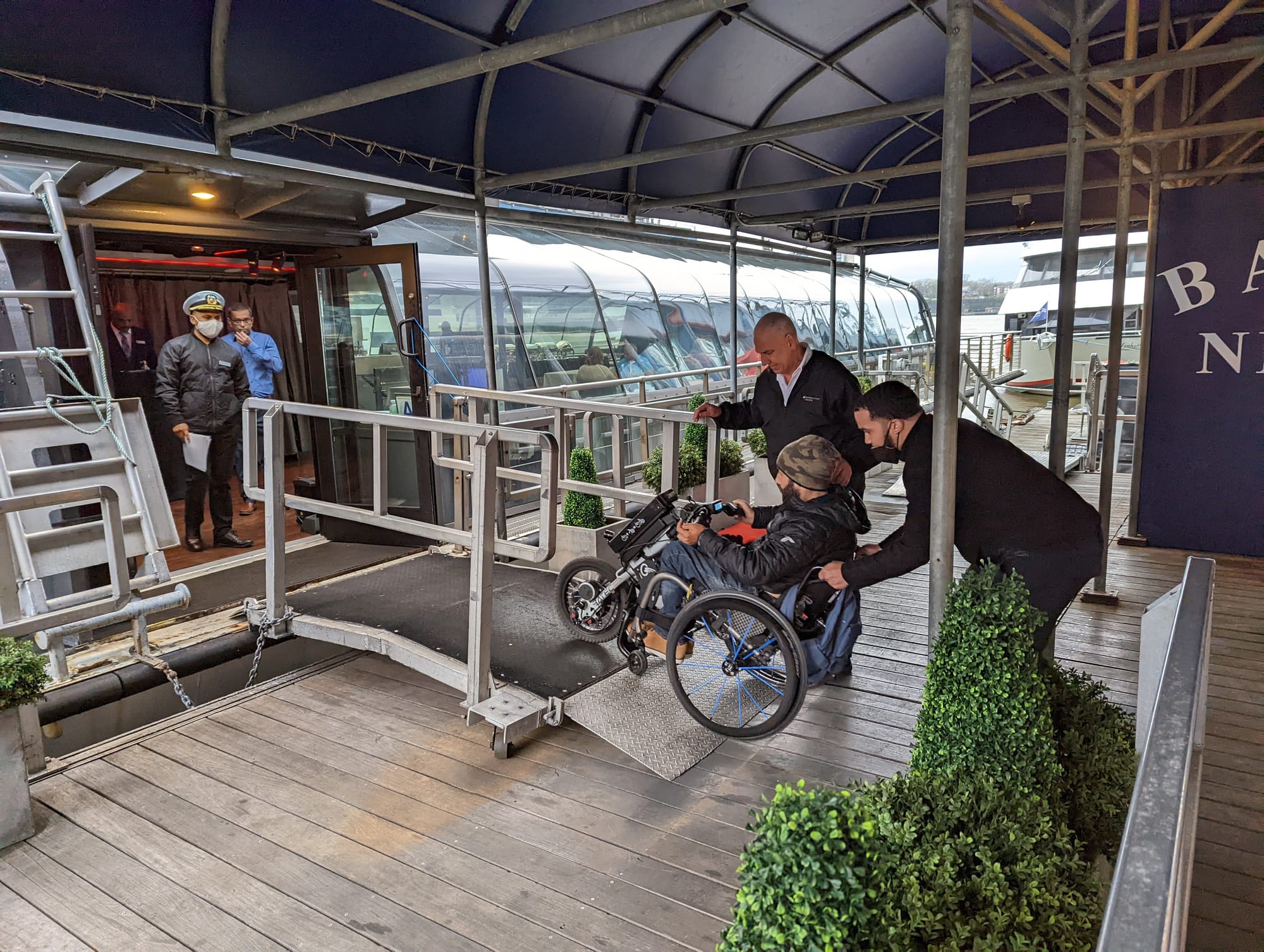
Wheelchair Repair Shops
We understand the frustration that can come with having a damaged wheelchair while traveling. To help alleviate this concern, we've identified several reliable wheelchair repair shops in New York City:
- National Seating & Mobility – 1513 Olmstead Ave, Bronx, NY 10462, United States
- Big Apple Mobility – 241 W 37th St, New York, NY 10018, United States
- Custom Wheelchairs & Scooters – 2521 E 18th St, Brooklyn, NY 11235, United States
If you need wheelchair repairs during your trip, these shops can provide the necessary support to ensure your mobility is maintained throughout your stay in New York City.
Safety
New York is relatively safe if you stick to tourist areas. However, we do recommend using the seatbelts and harnesses installed in newer buses when traveling. It's also wise to carefully plan your excursions beforehand to ensure you know where the nearest restrooms and accessible transport options are.
If you need help, our WtW travel experts are on hand to assist you during your trip, too. You can even plan it all through us!
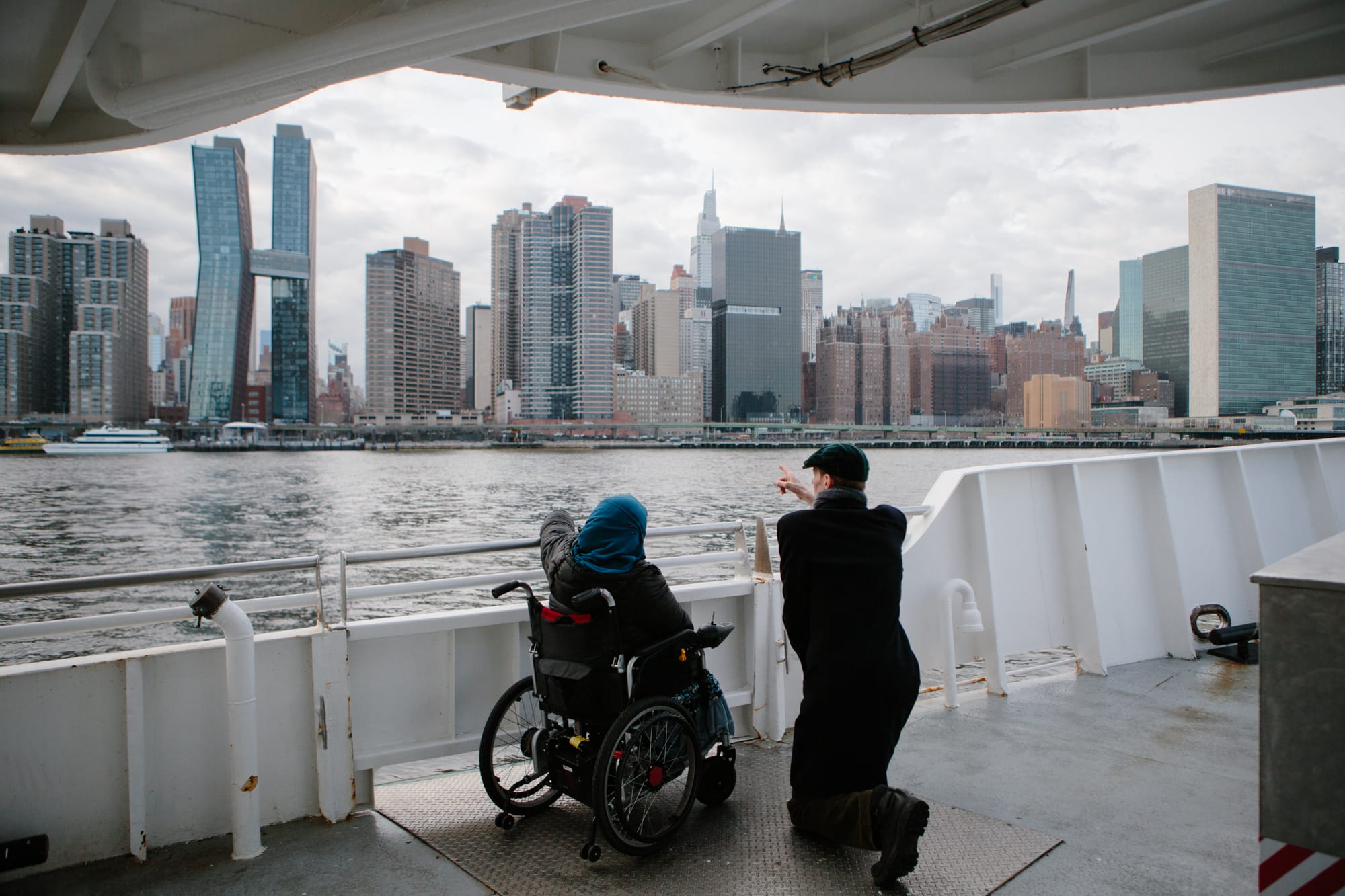
Book Accessible Travel With Accurate Information. 250+ Destinations.
Hotels, things to do, transportation, and more!
Worry-Free Travel Starts Here

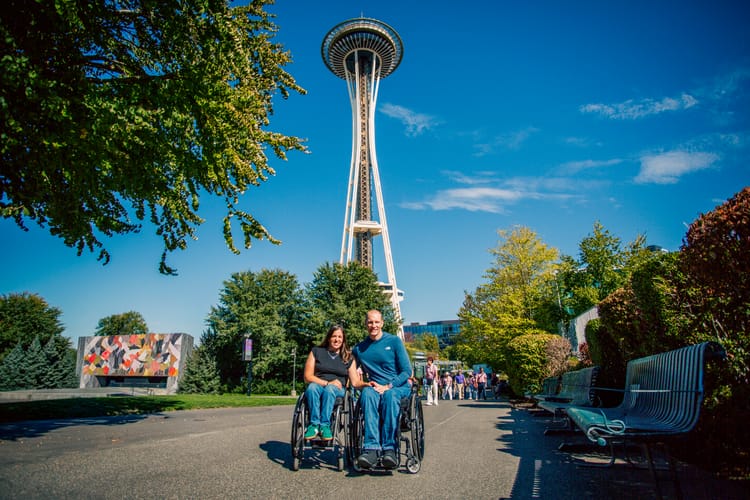
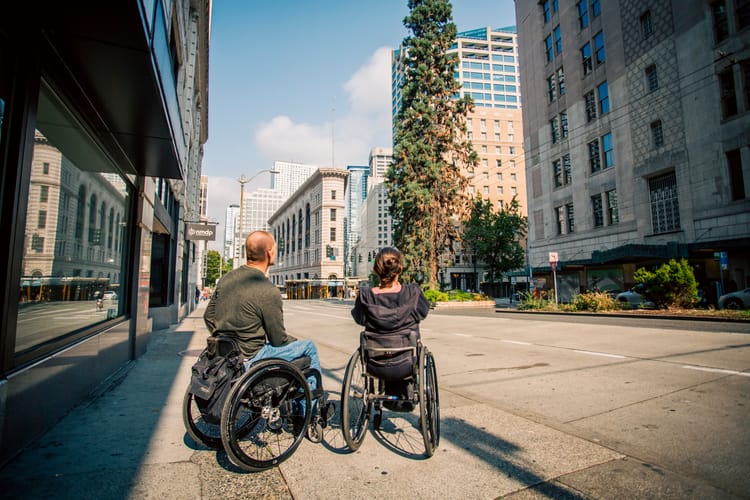

Comments ()